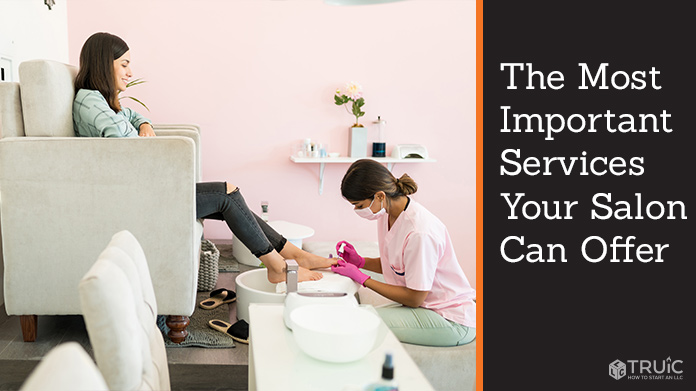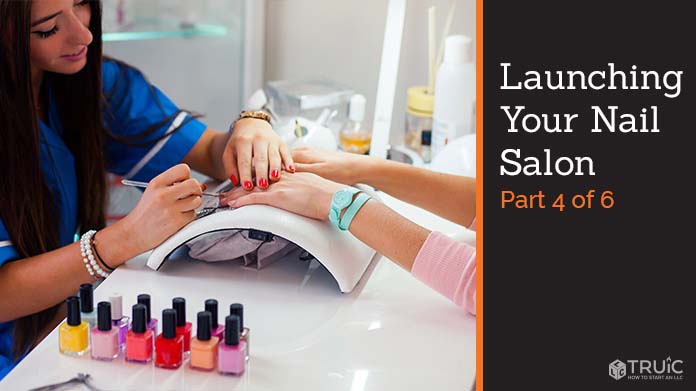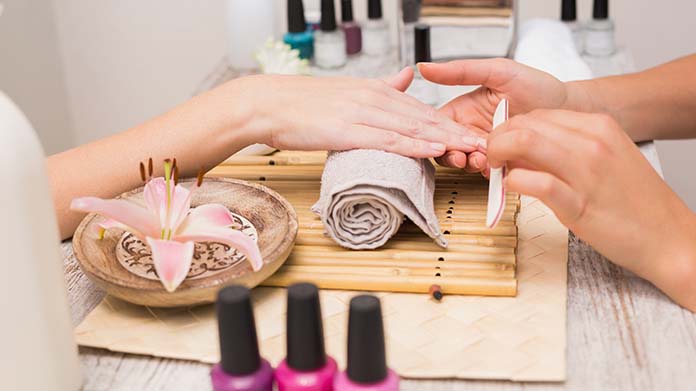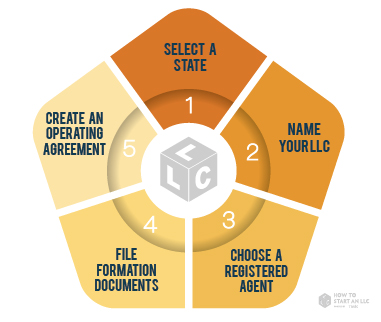The Most Important Services A Salon Can Offer
Nail salons and nail spas typically offer nail application services and treatments for various types of clientele. From manicures and pedicures to full-sculpted nail designs, nail salons can offer many different types of services. While more is better in some cases, successful salons often choose their niche services and then focus on delivering the best possible version of them.
Because nail salons usually face lots of competition, understanding the different types of nail services is critical to determining how to make your business successful and profitable. Read on for a closer look at many of the services and features nail salons may offer. You can then decide which services will work best for your new business venture.

Core Services
Manicures
As one of the most popular nail salon services, a manicure focuses on the fingernails and will be a vital service within your salon. A good manicure, however, is more than just clipping and shaping nails. It also should pamper your clients. You’ll soon recognize this as a recurring theme because your customer service can prove just as important to your salon’s success as your amazing nail art and services.
A basic manicure attends to the nails, cuticles, and skin around the nails. The nail technician will start by applying some lotion on and around the nails to help smooth the skin and identify any hangnails or damaged cuticles requiring extra attention. While massaging in the lotion, the nail technician will assess which services they may need to perform. This initial step also provides a great opportunity for the technician and client to talk and discuss what the client wants or expects for their nails. How you connect with your clients is critical to your success so don’t overlook the intangible benefits of such moments of one-on-one conversation.
After applying the lotion, the technician will push back or trim the cuticles. Then the nails — whether natural or created — should be clipped and shaped with a file. They may then apply acrylic or gel fills, if necessary. Finally, they’ll apply a base coat of polish to the nails followed by a color coat. A manicure is usually one of the quicker services in a nail salon, so your salon may end up regularly scheduling numerous manicure appointments.
Pedicures
While very similar in approach to manicures, pedicures instead focus on the feet and toes. Acting as daily workhorses, the feet and toes carry the weight of our bodies and absorb repeated impact with the ground. Pedicures, therefore, start by focusing on soothing the feet and smoothing the skin. Nail technicians will soak clients’ feet in a warm bath before scrubbing, pumicing, applying lotion with a massage, and generally pampering the feet.
Nail technicians then cut and shape the toenails and push back or trim the cuticles. Next, they will paint on the base and top color coats per client preference. Some clients, such as men, prefer to have the pedicure without the painted toes. While women represent the majority of clients for spa and nail services, men also visit salons for manicures, pedicures, and massages. Don’t overlook this demographic when setting up your business.
Manicure and Pedicure Packages
Mani-pedi packages offer clients an opportunity to really kick back and be pampered. They require a longer appointment, provide a bigger ticket for the salon, and can be popular for both couples and friends. As a client’s hands and toes get their proper attention, creative salons will take this opportunity to offer those clients additional services. The salon may provide some of these additional services while making others available for an added fee. See the “Additional Services” section below for more details.
Polish Changes
Many nail salons will refer to a polish change as a mini-manicure. In essence, the client will have their nails repainted. The process involves removing the old polish, tending to the nails and cuticles, and then painting a new base and top color coat.
These appointments may be some of the shortest, but also some of the more numerous. Fashion-conscious clients, for example, may change colors to match outfits and styles fairly often. Other clients may view this as a weekly, self-improvement service to keep themselves looking sharp and feeling pampered.
Nail Tips
Nail tips are plastic nail extensions that a technician glues onto a fingernail, cuts and shapes, and then often covers with acrylic or gel to create longer, more durable nails. Some clients only add nail tips in order to strengthen their existing nails rather than to lengthen them or allow for more intricate designs. Nail tips represent an essential part of most nail salons’ service offerings.
Acrylic (Sculptured) Nails
Having acrylic nails refers to the process of creating nails from acrylic powder and liquid monomer. Once combined, a nail technician then forms and shapes the resulting acrylic substance — usually over a nail tip or wrap. When finished, acrylic nails are very durable and technicians may style them in a variety of ways. Acrylic nails come with many color options and are very popular when creating nail art. They also can be kept quite long given their strength.
The nail technician will start by prepping a client’s nail by removing any old polish and cleaning up the cuticles, as in a manicure. Next, they will give the nail some texture and treat it with a solvent to help the acrylic set up and bond properly. The nail technician will then pick up beads of dry acrylic powder with a natural hair brush, which they’ve dipped in the monomer. The liquid and powder combine to create a malleable, workable substance that they then form with the brush directly on a client’s nails. After curing and drying the acrylic, the client has a new and durable artificial nail with which to work.
One drawback of acrylic nails may be the smell created when mixing and making them. Proper ventilation is key to keeping your staff and clients safe and relatively fume-free. If your clients or staff members prefer a nail process with less odor, gel nails may be an option.
Gels
Gels — or ultraviolet (UV) gels — involve an artificial, nail-building compound that comes premixed and offers less odor than acrylic nails. Gels are created on nails, tips, or forms like acrylic nails, but remain malleable and workable until they’re cured/dried under a UV bulb. Once finished, a gel nail is strong and ready to be painted and decorated.
Gels are clear and very shiny so they’re great for high-gloss nails. Technicians sometimes use gels as a top coat over acrylics to help achieve the same high-gloss shine on acrylic-based nails. Gels also are more forgiving in the creation process because they only cure when introduced to UV light. In contrast, acrylics cure just a few minutes after application.
Wraps (Overlays)
Nail wraps are thin pieces of silk, paper, or synthetic material that a technician applies to natural nails and then coats with a polymer resin. These nail treatments — probably the least damaging to a client’s nails — often serve as strengthening top coats to help natural nails to grow out.
Because of their thin design, wraps usually aren’t used to design long nails. Instead, technicians use them to create more shortly manicured looks. Wraps may be shaped and colored like any other nail after the polymer resin cures.
Add-On Treatments
Add-on treatments offer renewal and rejuvenation for nails, cuticles, and skin damaged from nail work. They also can create additional revenue for your business, requiring a less-technical approach from your manicurists.
Paraffin (Hot Wax) Treatments
Paraffin wax treatments make skin very soft and supple. The warm wax bonds to skin to help smooth and moisturize it, making this treatment an excellent addition to a manicure, pedicure, or both. Clients dip their hands or feet in the warm wax bath and then cover their extremities with plastic gloves or socks. This keeps the wax in place on the skin and helps retain some of its soothing warmth. After the wax cools, it peels off easily to reveal rejuvenated and smooth skin.
Hot Oil Manicure Treatments
Similar to hot wax, a hot oil treatment involves the client soaking their nails in a bath of essential oils. Tailored to a client’s preferences and specific needs, the oil is soothing, moisturizing, and can offer healing or transformative qualities for both nails and skin.
Additional Services
Nail Art
Some salons specialize in creating art for clients’ nails. Using numerous painting and sculpting techniques akin to painting large canvases or creating 3D designs, nail artists develop distinctive, custom designs for their clients’ nails. Intricate details, custom colors, special textures, and themed designs can all help clients show off their personal style.
Nail art requires a high degree of patience and precision, making it a service that can command top dollar. As the popularity of creative and professional nail artists grows, their designs continue to break traditional boundaries. If your clientele can support this additional service, it will provide a very fashion-forward option for your salon.
Massages
Some clients seek additional pampering when they visit a spa or nail salon. Options for hand, foot, and deep-tissue massages will offer clients complete relaxation while helping to create a strong, loyal customer base. Massages also make great additions to couples’ mani-pedi appointments.
Nail Parties
Nail parties usually involve a group of clients visiting a salon or spa for a special occasion. Birthdays, bridal and baby showers, and graduations are popular triggers for such parties. Yet, almost any time can be a great time to receive some much-needed TLC en masse.
As a salon or spa owner, you can offer group package rates that include a set of services for the entire group. Clients may even have the salon to themselves for a few hours, which can increase the feeling of exclusivity many clients crave.
Conclusion
Nail salons can be great business ventures if you understand the business and have creative ideas to make your salon stand out. Excellent customer service, a clean and efficient salon experience, and distinctive additional services will help set your business apart. As an owner, remember to keep pace with trends and products — and don’t be afraid to ask your clients what they do and don’t like. Success comes from hard work and smart business strategies. Know your clients to grow your business.
If you need help branding your nail salon, try using our Free Nail Salon Logo Maker. Our free tool will help you brand your nail salon with a unique logo to make your small business stand out.


